Would you like to learn how to to take your brown table from the dark side over to the light? In this week’s post you’ll learn how to refinish a dining table and chairs with white wash stain and paint. And since we’re all at home more than we’re out shopping these days, we’ll be talking about how to make use of some paints you may already have on-hand.
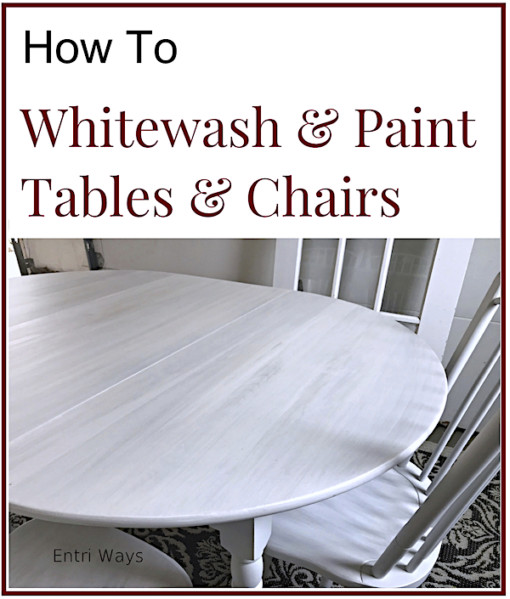
A few weeks ago, my cousin decided she was ready to replace this dining table and set of chairs. The set had been left to her. As a young family at the time, she said she was grateful for the hand-me-down furniture when she moved into her new home.
In addition to being their kitchen table, my cousin’s two young girls used this table as their craft table. It was covered in love – meaning there were many afternoons of playdough, paint, and glitter left behind on this set.
Remove the Old Finish
Most people would run from this table if they saw it left on the sidewalk for free. Not me though. What I envisioned was the solid wood I knew was under that finish.

Removing the finish from the tabletop was definitely a challenge. It would have been a good idea to use a wood stripper product, but every table is different and I didn’t realize how difficult this finish would be to remove until I was already into it.
So I plugged away with my Craftsman rotary sander to remove the finish entirely from the tabletop, chair seats, and about 8 inches of the bottom of each chair leg.


Choose Your Supplies
From here, this post may get a little confusing. Because normally I would tell you my #1 paint to use on table bases and chairs and tell you to use that paint. But I’ve been trying to use up some leftover paints and stains I have in stock and I happened to be out of my favorite paint for tables and chairs. So today, we’re working with what we have.
After five years of painting furniture, I’ve learned how to make just about any paint work. The key is to use them in the right combination. So I went to my bookcase of supplies and chose a few products.
- Minwax water-based White Wash Pickling stain
- Zinsser Primer
- Latex paint – Light Silver
- Valspar Cabinet Enamel – white
- Water-based clear topcoat
- Purdy 1.5 inch brush
- Craftsman rotary sander
- 60 grit, 8-hole sanding discs
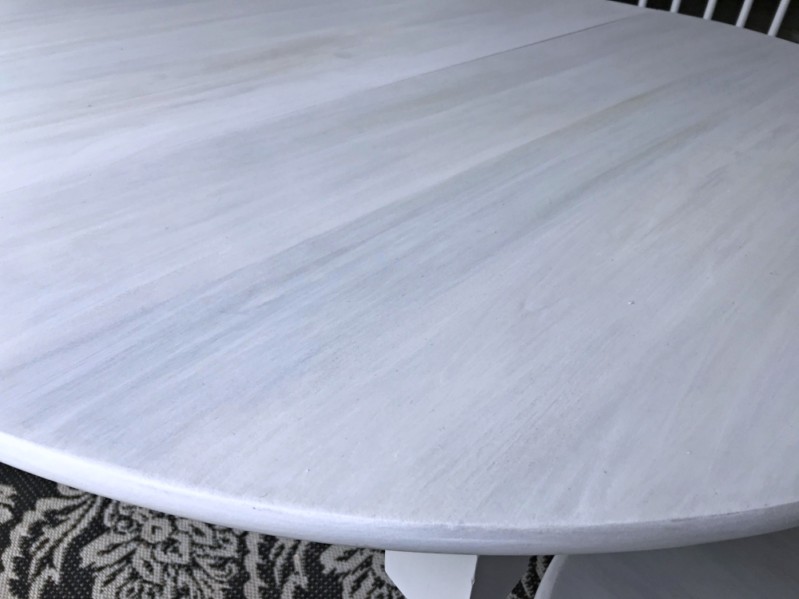
Apply the White Wash Stain
I started by whitewashing the tabletop, chair seats, and the bottom eight inches of each chair leg. To do this, fold a piece of a clean white cotton t-shirt into about 3″x4″ rectangle. The folded fabric should be free of wrinkles.
Pour a small amount of the whitewash stain into a separate clean cup. Never work from the can or you could discolor the entire can of white stain if there’s residue on the table.
Dip the clean fabric into the stain and apply it to the table. Work in long even strokes from one side of the table to the other. The water-based stain will soak in and dry pretty quickly so you can add a second coat in just about 30 minutes. This table and set of chairs have 4 coats of the whitewash stain.
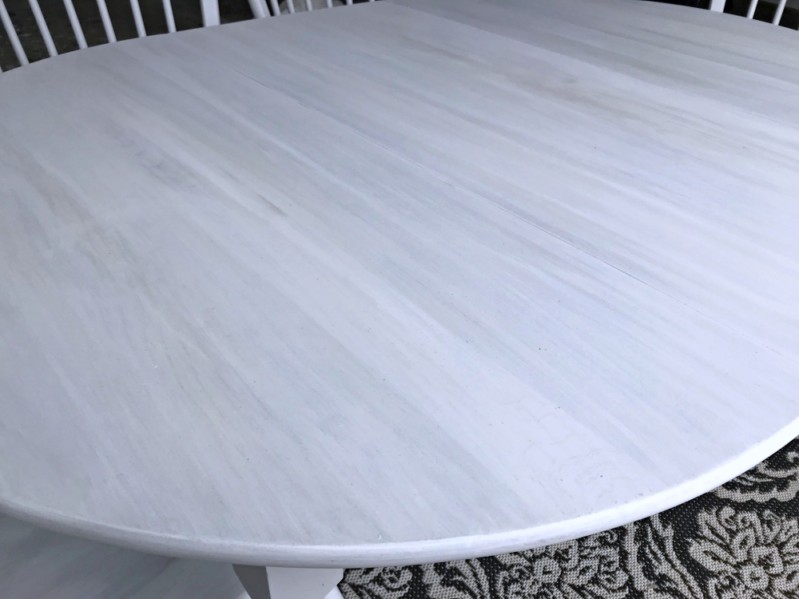

Apply a Bonding Primer
I decided I’ wanted the painted areas of this set to blend with the whitewash rather than be a bold contrast like black and white or blue and white. But rather than a pure white, I opted for a very, very light silvery gray.
Going light over the previously dark black paint, meant I first had to prime. First because I was going from dark to light. And second because the silvery gray I had in stock was a latex wall paint and would require a bonding primer to help it adhere. Two coats of primer were painted on.
Apply Paint
Using the eggshell latex silvery gray paint on its own would result in a finish with too low of a sheen. It would feel dry to the touch. So I mixed in a little white enamel paint I had on hand to bring up the sheen a notch. Two coats of the paint mix were painted on.
Remember I stained the bottom 8 inches of the chair legs? As you paint on the silvery gray to the rest of the chair leg brush the paint down onto the top two inches of the stained area of the leg. Since the two colors blend, just pull the paint down unevenly to blend the two together.

Apply a Clear Topcoat
Finally on this set, I applied a clear topcoat to protect the surfaces even more. A topcoat is not always needed, but because I primarily used latex paint, I wanted to be sure it had a durable, washable surface that would wipe clean.


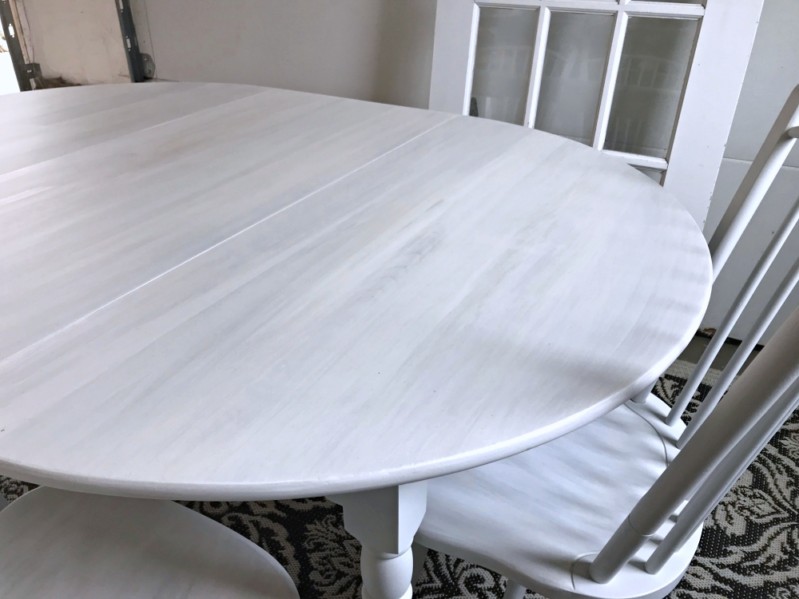

This whitewashed dining table and set of four chairs is now for sale in Entri Ways’ online shop.
This Post Was Featured On
Disclosure: This post contains affiliate links to products I use myself.



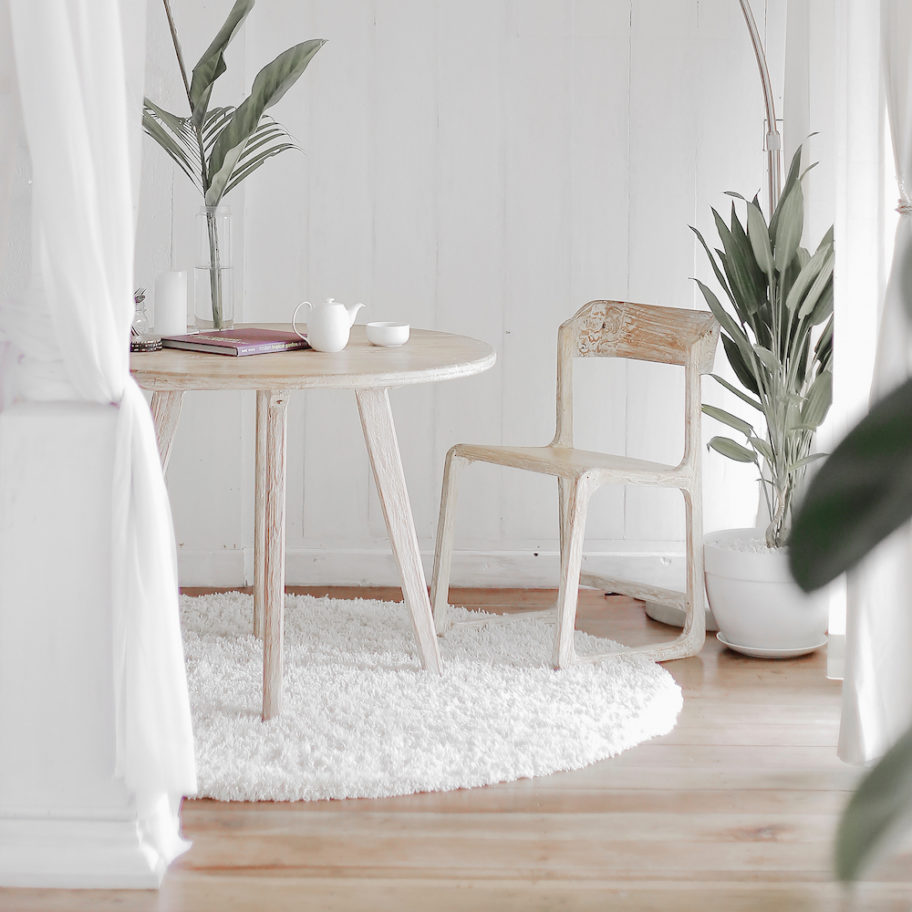

Leave a Reply